Modified Surface Relief Layer Created by Holographic Lithography: Application to Selective Sodium and Potassium Sensing
Abstract
1. Introduction
2. Materials and Methods
2.1. Fabrication of Surface Relief Gratings (SRG)
2.2. AFM
2.3. SEM
2.4. Preparation of Sensing Layer
2.4.1. DC or TBC in PVC Matrix
2.4.2. DC or TBC in a Sol-Gel Matrix
3. Results and Discussions
3.1. Characterisation of Holographic Surface Relief Structures and Sensing Layer Material by AFM
3.2. Diffraction Efficiency and Angular Selectivity Studies
3.3. Evaluation of the Selectivity and Sensitivity Response of the Sensor Achieved by Coating with DC or TBC in Polyvinyl Chloride (PVC) Matrix
3.3.1. Evaluation of the Selectivity in PVC Matrix
3.3.2. Evaluation of the Sensitivity in PVC Matrix Containing DC
3.4. Improvement of the Sensitivity by Changing the Porosity of the Matrix
3.4.1. SEM Characterisation
3.4.2. Evaluation of the Selective Response of the Sensor Achieved by Coating with DC in a Sol-Gel Matrix
3.4.3. Evaluation of the Selective Response of the Sensor Achieved by Coating with TBC in a Sol-Gel Matrix
4. Conclusions
Author Contributions
Funding
Acknowledgments
Conflicts of Interest
References
- Melorose, J.; Perroy, R.; Careas, S. Biomedical Sensors; Jones, D.P., Ed.; Momentum Press: New York, NY, USA, 2015; Volume 1, ISBN 9788578110796. [Google Scholar]
- Ponmozhi, J.; Frias, C.; Marques, T.; Frazao, O. Smart sensors/actuators for biomedical applications: Review. Meas. J. Int. Meas. Confed. 2012, 45, 1675–1688. [Google Scholar] [CrossRef]
- Bujes-Garrido, J.; Arcos-Martinez, M.J. Disposable sensor for electrochemical determination of chloride ions. Talanta 2016, 155, 153–157. [Google Scholar] [CrossRef] [PubMed]
- Balcı, A.K.; Koksal, O.; Kose, A.; Armagan, E.; Ozdemir, F.; Inal, T.; Oner, N. General characteristics of patients with electrolyte imbalance admitted to emergency department. World J. Emergency Med. 2013, 4, 113–116. [Google Scholar] [CrossRef]
- Kolthoff, I.M.; Chantooni, M.K. Transfer Activity Coefficients in Various Solvents of Several Univalent Cations Complexed with Dibenzo-18-Crown-6. Anal. Chem. 1980, 52, 1039–1044. [Google Scholar] [CrossRef]
- Mayes, A.G.; Blyth, J.; Millington, R.B.; Lowe, C.R. Metal ion sensitive holographic sensors. Anal. Chem. 2002, 74, 3649–3657. [Google Scholar] [CrossRef] [PubMed]
- Madrigal González, B.; Christie, G.; Davidson, C.A.B.; Blyth, J.; Lowe, C.R. Divalent metal ion-sensitive holographic sensors. Anal. Chim. Acta 2005, 528, 219–228. [Google Scholar] [CrossRef]
- Hsiao, V.K.S.; Waldeisen, J.R.; Zheng, Y.; Lloyd, P.F.; Bunning, J.; Huang, T.J. Aminopropyltriethoxysilane (APTES)-functionalized nanoporous polymeric gratings: Fabrication and application in biosensing. J. Mater. Chem. 2007, 17, 4896–4901. [Google Scholar] [CrossRef]
- Ye, G.; Li, X.; Wang, X. Diffraction grating of hydrogel functionalized with glucose oxidase for glucose detection w. ChemComm 2010, 2, 3872–3874. [Google Scholar] [CrossRef] [PubMed]
- Zhou, Z.; Shi, Z.; Cai, X.; Zhang, S.; Corder, S.G.; Li, X.; Zhang, Y.; Zhang, G.; Chen, L.; Liu, M.; et al. The Use of Functionalized Silk Fibroin Films as a Platform for Optical Diffraction-Based Sensing Applications. Adv. Mater. 2017, 201605471, 1–7. [Google Scholar] [CrossRef] [PubMed]
- Cody, D.; Naydenova, I. Theoretical modeling and design of photonic structures in zeolite nanocomposites for gas sensing Part I: Surface relief gratings. J. Opt. Soc. Am. A 2017, 34, 2110. [Google Scholar] [CrossRef] [PubMed]
- Olsen, G.; Ulstrup, J.; Chi, Q. Crown-Ether Derived Graphene Hybrid Composite for Membrane-Free Potentiometric Sensing of Alkali Metal Ions. ACS Appl. Mater. Interfaces 2016, 8, 37–41. [Google Scholar] [CrossRef] [PubMed]
- Gupta, V.K.; Ganjali, M.R.; Norouzi, P.; Khani, H.; Nayak, A.; Agarwal, S. Electrochemical Analysis of Some Toxic Metals by Ion–Selective Electrodes. Crit. Rev. Anal. Chem. 2011, 41, 282–313. [Google Scholar] [CrossRef] [PubMed]
- El Nashar, R.M.; Wagdy, H.A.A.; Aboul-Enein, H.Y. Applications of calixarenes as potential ionophores for electrochemical sensors. Curr. Anal. Chem. 2009, 5, 249–270. [Google Scholar] [CrossRef]
- Cammann, K. Working with Ion-Selective Electrodes: Chemical Laboratory Practice; Springer: New York, NY, USA, 1979; ISBN 3642672760. [Google Scholar]
- Bratovčić, A.; Odobašić, A.; Ćatić, S. Th e Advantages of the Use of Ion- Selective Potentiometry in Relation to UV/VIS Spectroscopy. Agric. Conspectus Sci. Cus. Agric. Conspec. Sci. 2009, 74, 139–142. [Google Scholar]
- Yetisen, A.K. Holographic Sensors; Springer International Publishing AG: Basel, Switzerland, 2015; ISBN 9780470019054. [Google Scholar]
- Owens, G.J.; Singh, R.K.; Foroutan, F.; Alqaysi, M.; Han, C.; Mahapatra, C.; Kim, H.; Knowles, J.C. Progress in Materials Science Sol–gel based materials for biomedical applications. Prog. Mater. Sci. 2016, 77, 1–79. [Google Scholar] [CrossRef]
- Gul, S.E.; Cody, D.; Kharchenko, A.; Martin, S.; Mintova, S.; Cassidy, J.; Naydenova, I. LTL type nanozeolites utilized in surface photonics structures for environmental sensors. Microporous Mesoporous Mater. 2018, 261, 268–274. [Google Scholar] [CrossRef]
- Gul, S.E.; Martin, S.; Cassidy, J.; Naydenova, I. Development of sensitive holographic devices for physiological metal ion detection. Proceed. SPIE—Int. Soc. Opt. Eng. 2017, 10354. [Google Scholar] [CrossRef]
- Trainer, K.; Wearen, K.; Nazarova, D.; Naydenova, I.; Toal, V. Optimization of an acrylamide-based photopolymer system for holographic inscription of surface patterns with sub-micron resolution. J. Opt. 2010, 124012. [Google Scholar] [CrossRef]
- Klein, W.R.; Cook, B.D. Unified Approach to Ultrasonic Light Diffraction. IEEE Trans. Sonics Ultr. 1967, 14, 123–134. [Google Scholar] [CrossRef]
- Raman, C.V.; Nath, N.S.N. The diffraction of light by high frequency sound waves: Part III. Proceed. Ind. Acad. Sci.—Sect. A 1936, 84. [Google Scholar] [CrossRef]
- Kogelnik, H. Coupled Wave Theory for Thick Hologram Gratings. Bell Syst. Tech. J. 1969, 48, 2909–2947. [Google Scholar] [CrossRef]
- Naydenova, I.; Mihaylova, E.; Martin, S.; Toal, V. Holographic patterning of acrylamide-based photopolymer surface. Opt. Express 2005, 13, 4878–4889. [Google Scholar] [CrossRef] [PubMed]
- Telting-Diaz, M.; Diamond, D.; Smyth, M.R. Flow-injection analysis with tetrameric calixarene-based potentiometric detection. Anal. Chim. Acta 1991, 251, 149–155. [Google Scholar] [CrossRef]
- Bühlmann, P.; Pretsch, E.; Bakker, E. Carrier-based ion-selective electrodes and bulk optodes. 2. Ionophores for potentiometric and optical sensors. Chem. Rev. 1998, 98, 1593–1688. [Google Scholar] [CrossRef] [PubMed]
- Malinowska, E.; Gawart, L.; Parzuchowski, P.X.; Rokicki, G.; Brzozka, Z. Novel approach of immobilization of calix[4]arene type ionophore in “self-plasticized” polymeric membrane. Anal. Chim. Acta 2000, 421, 93–101. [Google Scholar] [CrossRef]
- Hiller, W.; Frey, S.; Strahle, J.; Bocheb, G.; Zargesb, W.; Harms, K.; Marsch, M.; Wollertb, R.; Dehnicke, K. Die Kristallstrukturen von (Li3(12-Krone-4)2[HC(CN)2]3}, [HC(CN)2]) und (Na[N(nBu)4,][HC(CN)2,]2. THF}. Chem. Ber. 1992, 3, 87–92. [Google Scholar] [CrossRef]
- Katsuta, S.; Tachibana, H.; Takeda, Y. Stabilities in Water of Alkali Metal Ion Complexes with Dibenzo-24-crown-8 and Dibenzo-18-crown-6 and Their Transfer Activity Coefficients from Water to Nonaqueous Solvents. J. Solut. Chem. 2002, 31, 499–510. [Google Scholar] [CrossRef]
- Jaiswal, S.; Mchale, P.; Duffy, B. Colloids and Surfaces B: Biointerfaces Preparation and rapid analysis of antibacterial silver, copper and zinc doped sol–gel surfaces. Colloids Surf. B Biointerfaces 2012, 94, 170–176. [Google Scholar] [CrossRef] [PubMed]
- Mayes, A.G.; Blyth, J.; Millington, R.B.; Lowe, C.R. Metal ion-sensitive holographic sensors. Anal. Chem. 2002, 74, 3649–3657. [Google Scholar] [CrossRef]
- Burtis, A.C.; Edward, R.; Bruns, E.D. Fundamentals of Clinical Chemistry, 6th ed.; Sawyer, B.G., Ed.; Saunders Elsevier: Philadelphia, PA, USA, 2001; ISBN 9780721638652. [Google Scholar]
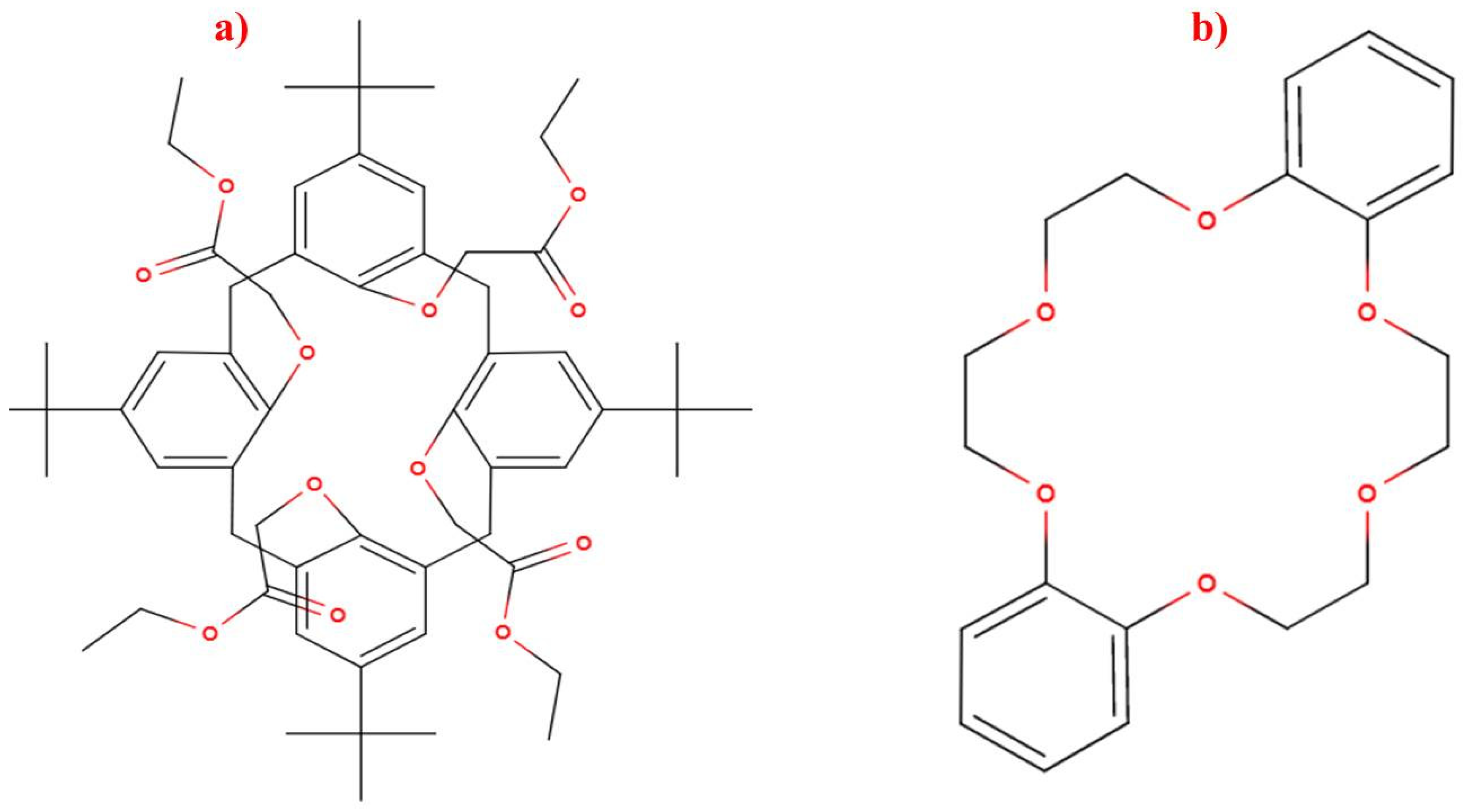
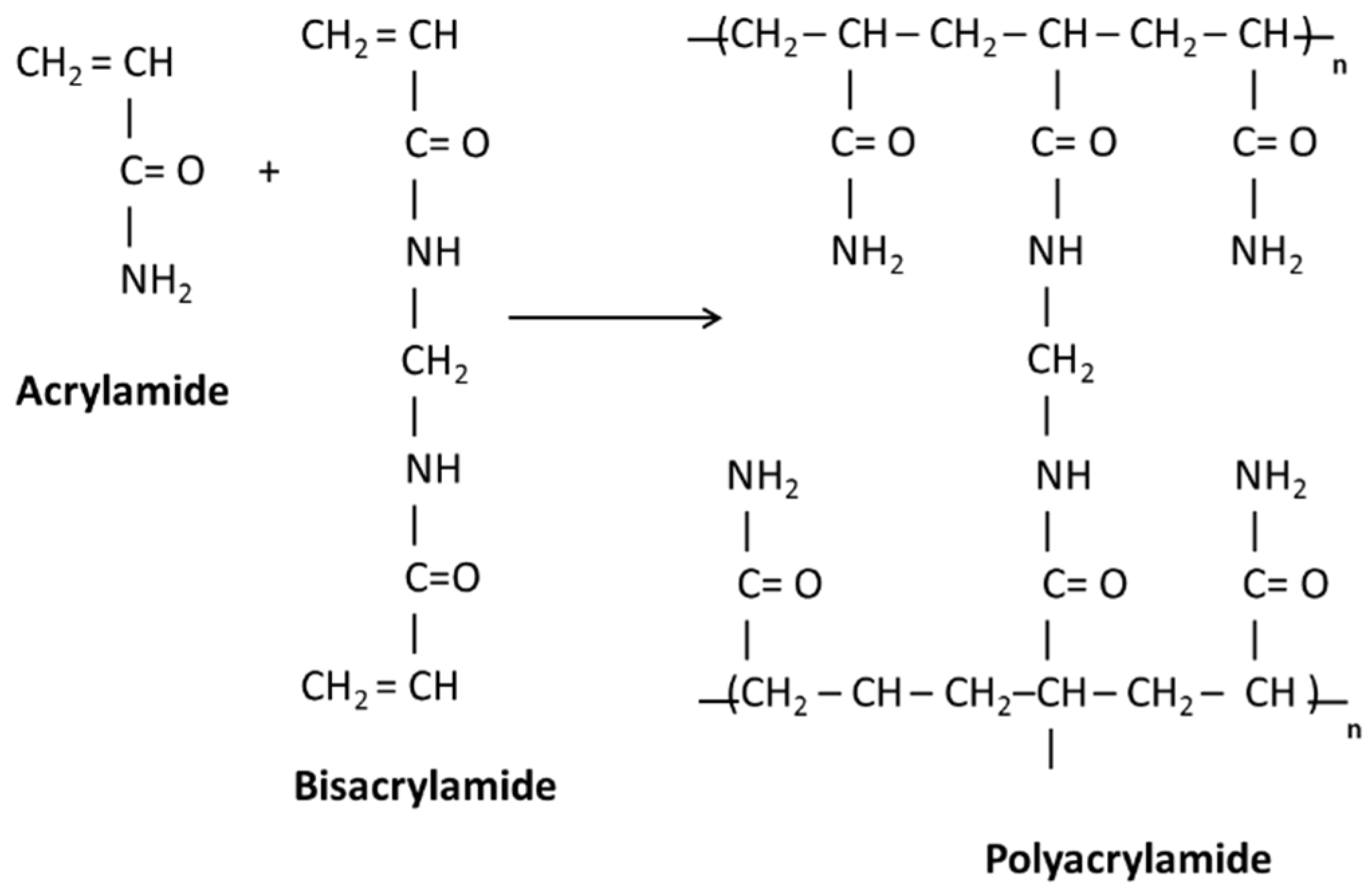
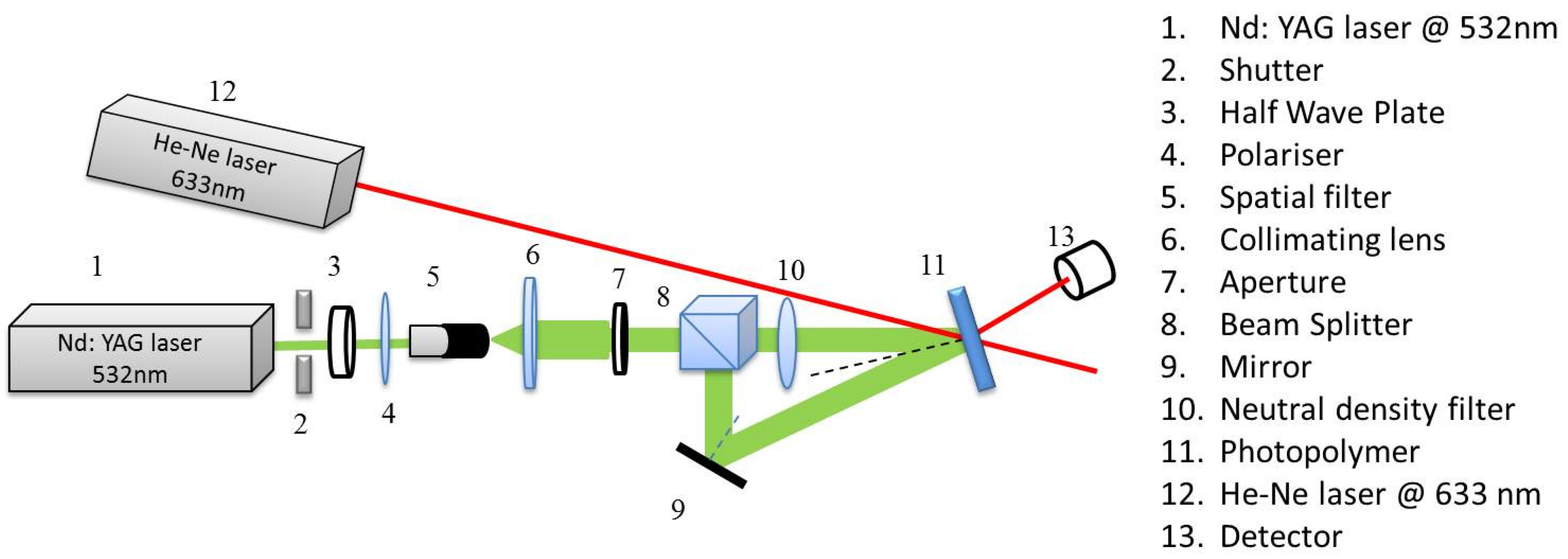
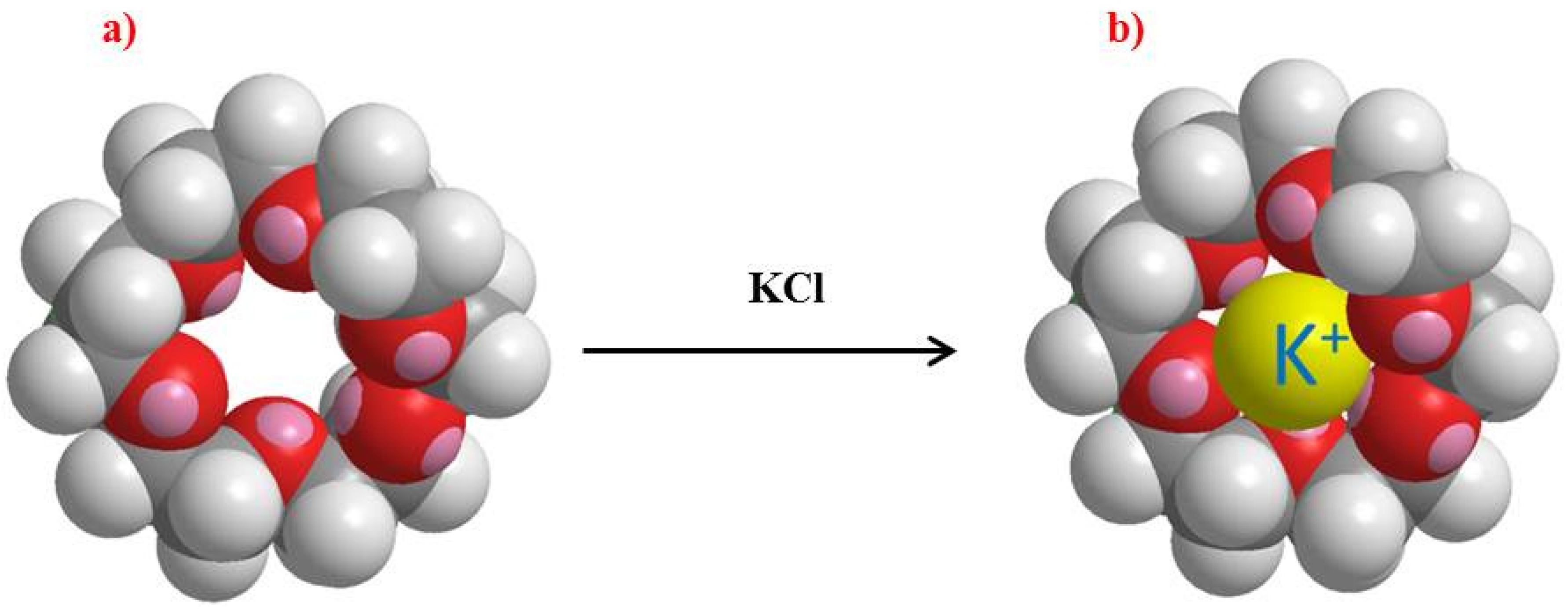
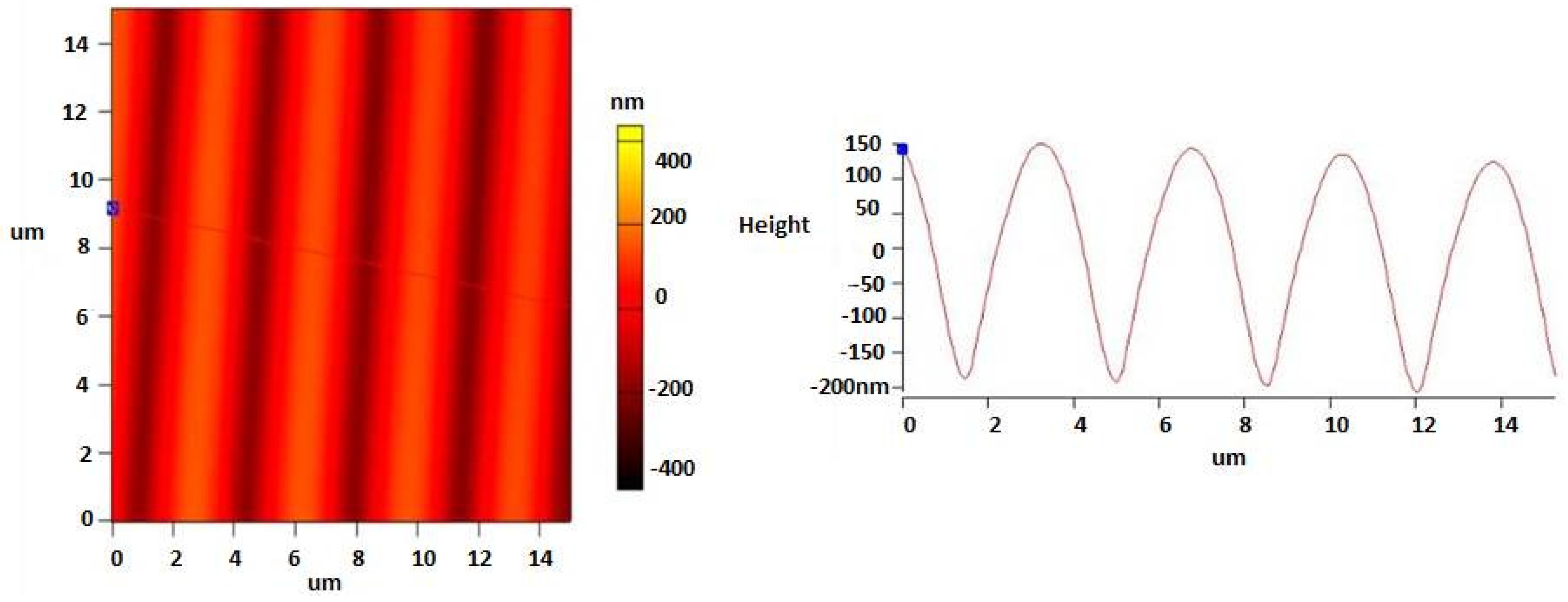
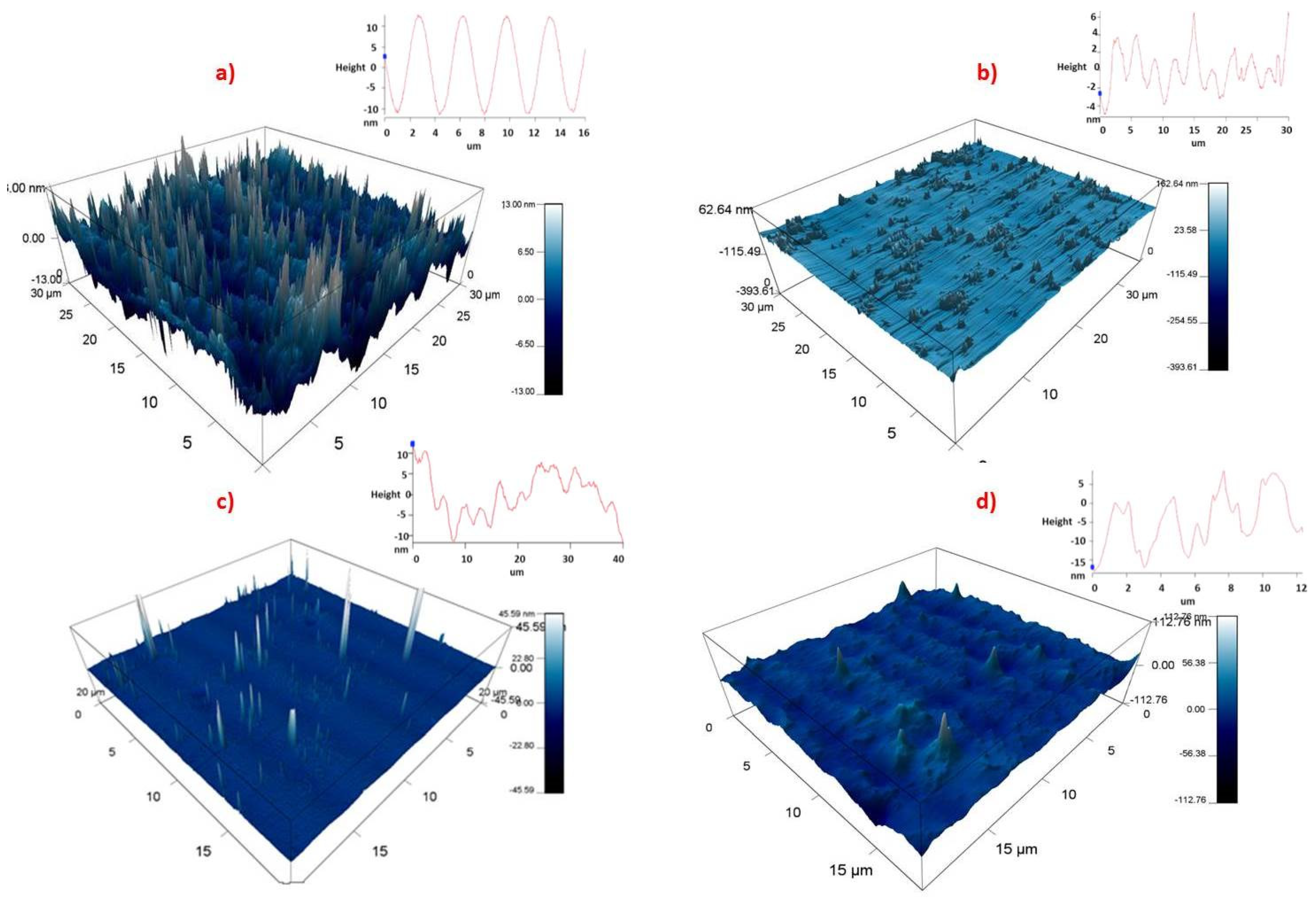
 ), after spin coating with (DC)/PVC layer (
), after spin coating with (DC)/PVC layer ( ) and after exposure to analyte K+ (50 mM) (
) and after exposure to analyte K+ (50 mM) ( ,
, ).
).
 ), after spin coating with (DC)/PVC layer (
), after spin coating with (DC)/PVC layer ( ) and after exposure to analyte K+ (50 mM) (
) and after exposure to analyte K+ (50 mM) ( ,
, ).
).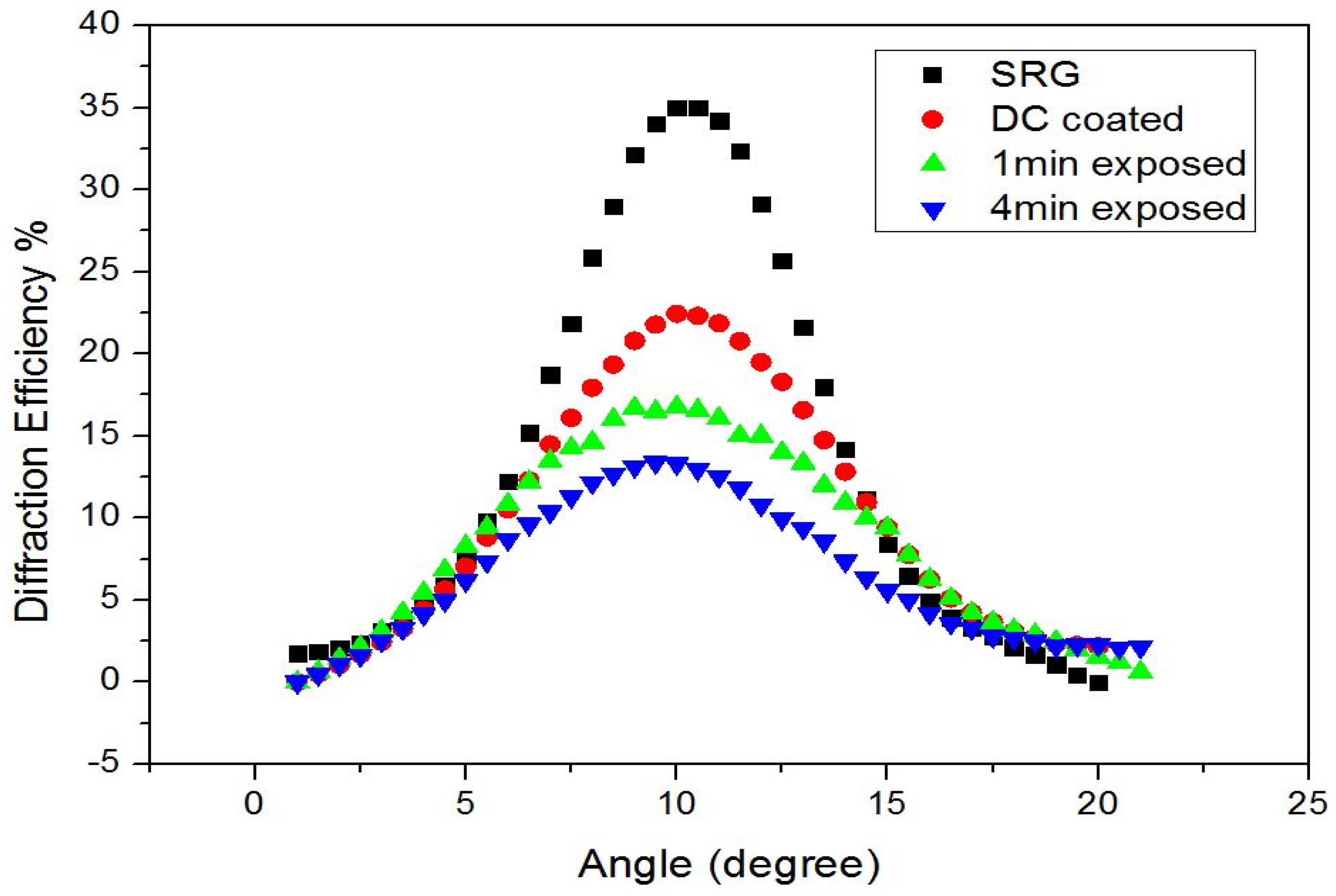
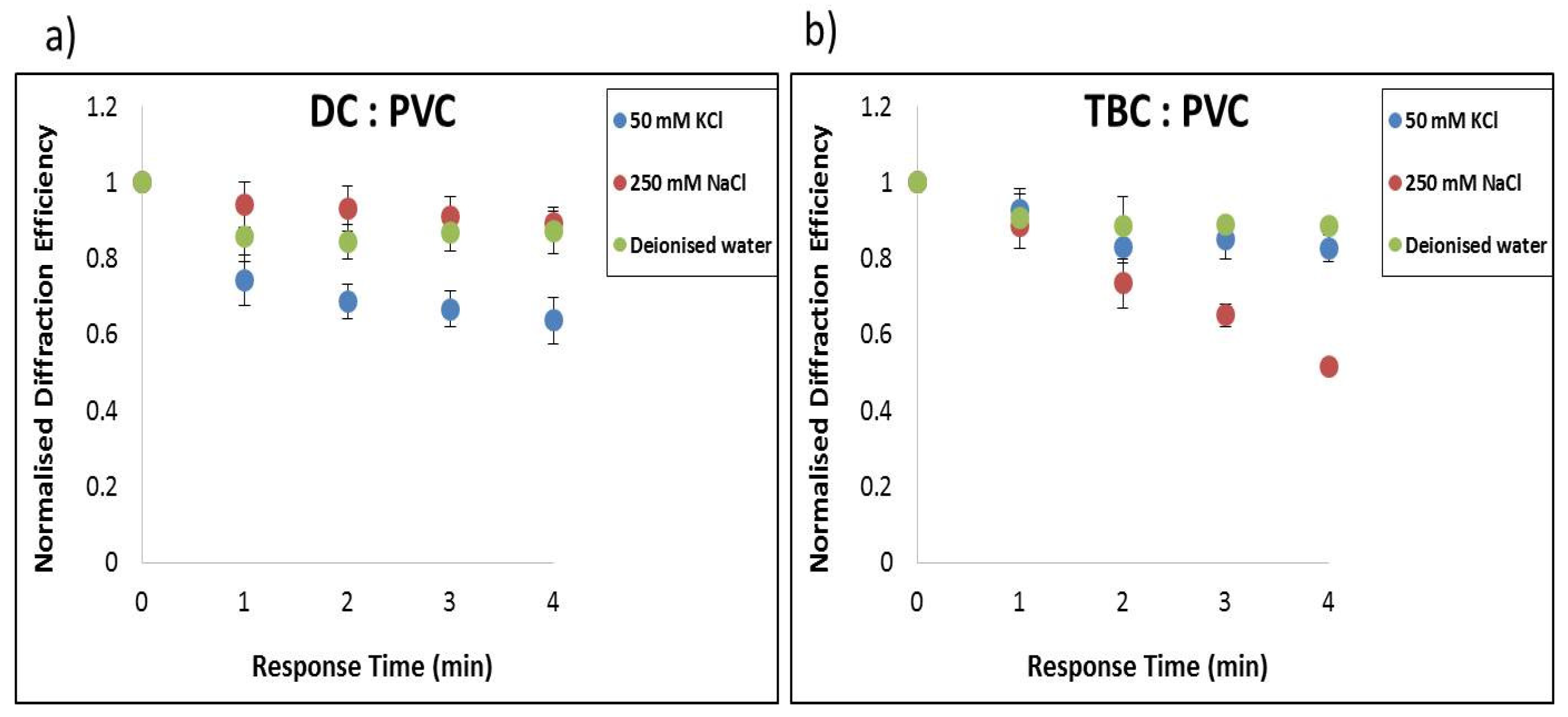
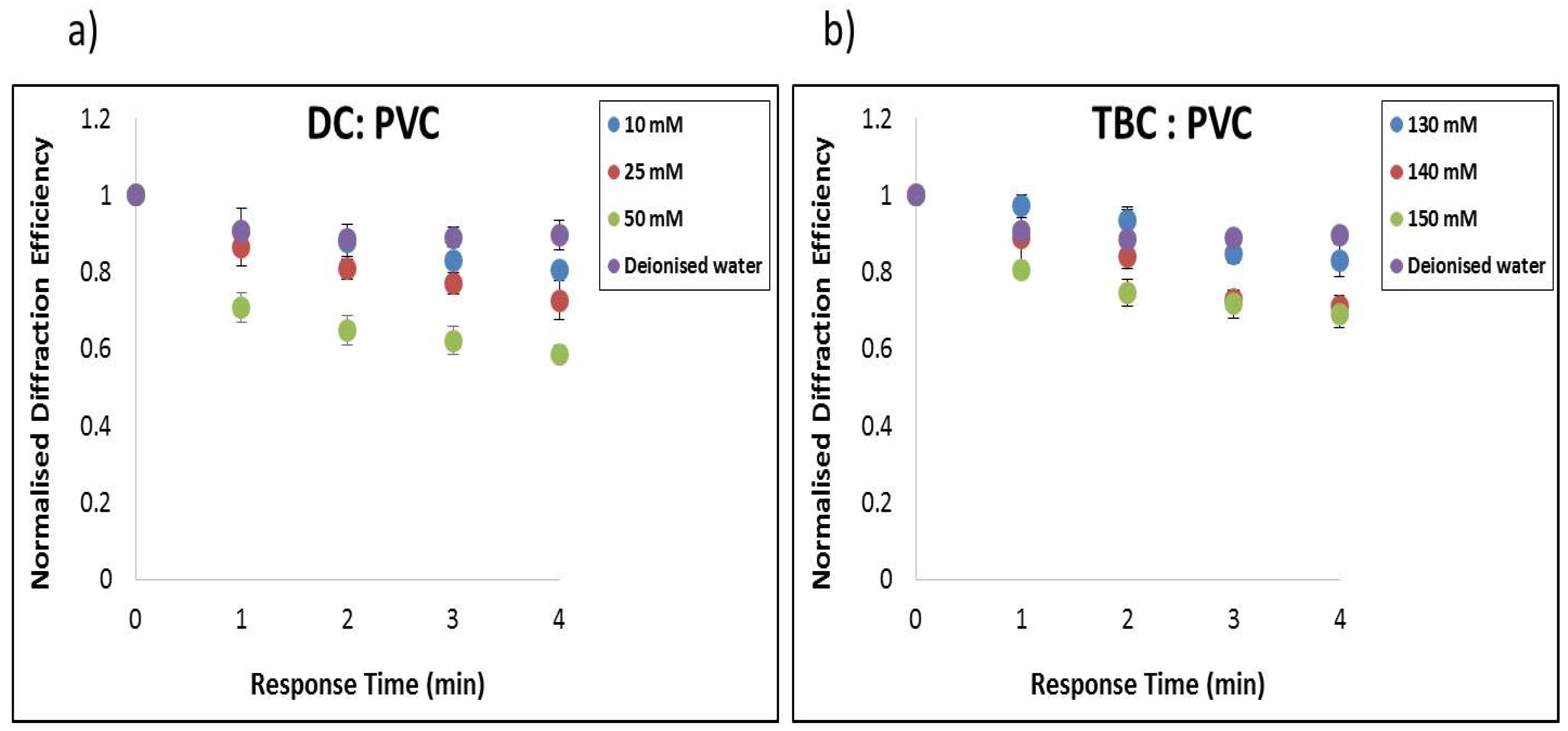
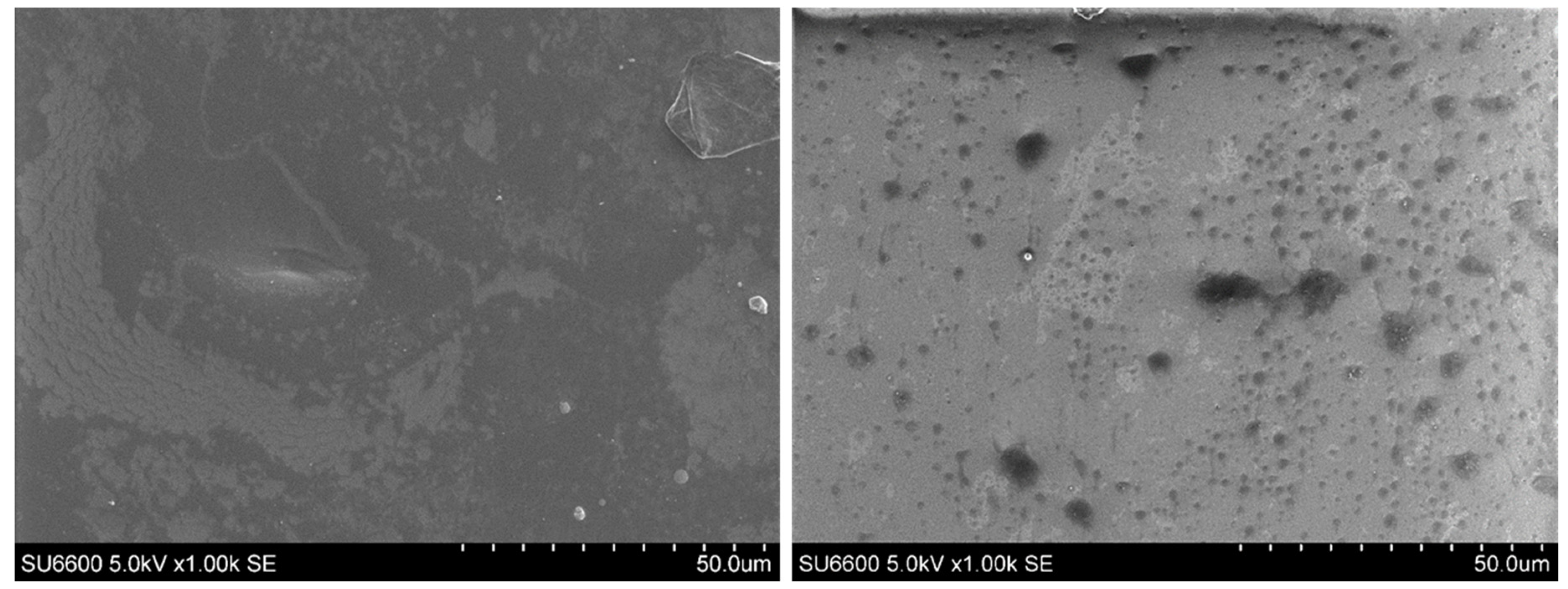
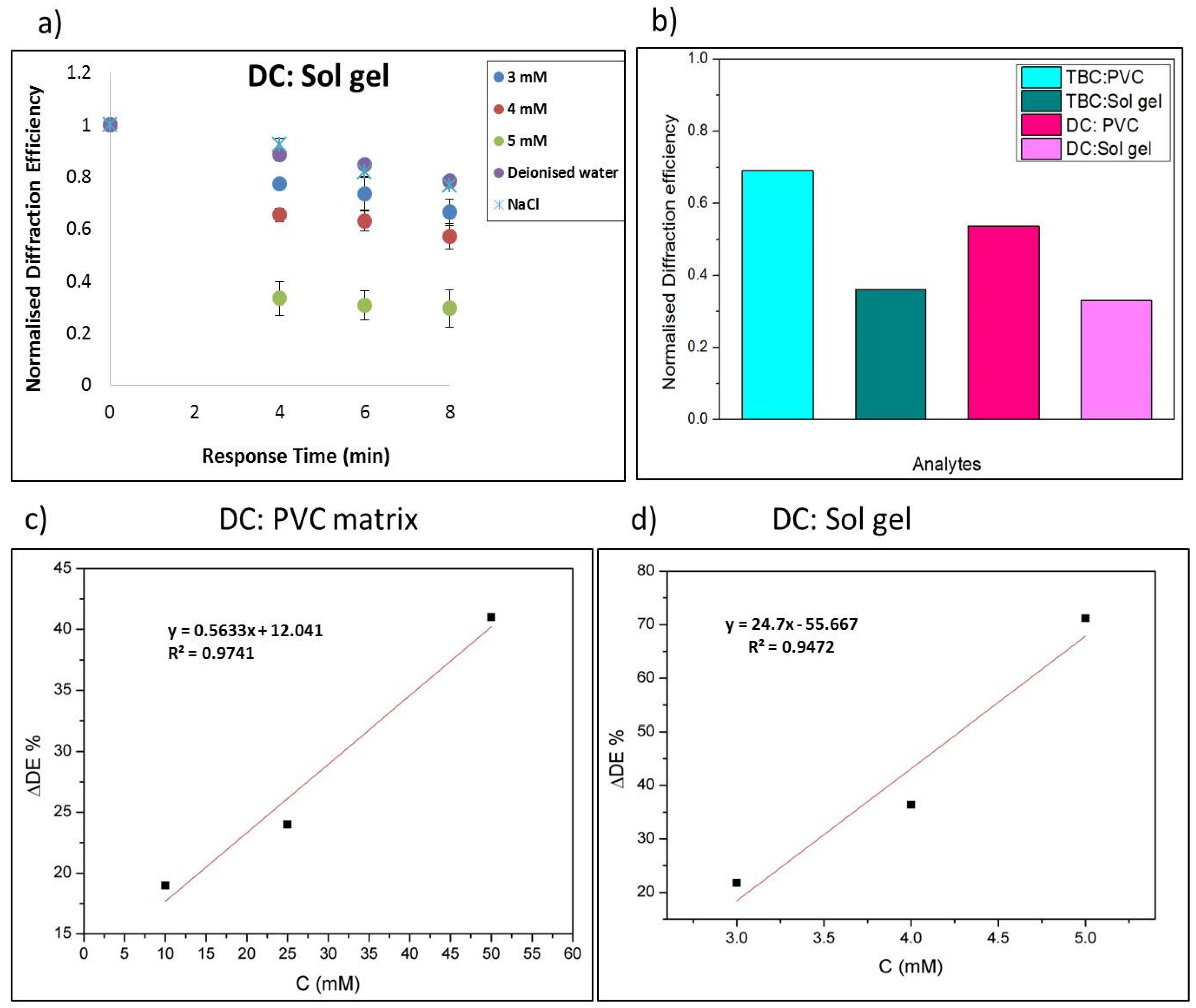
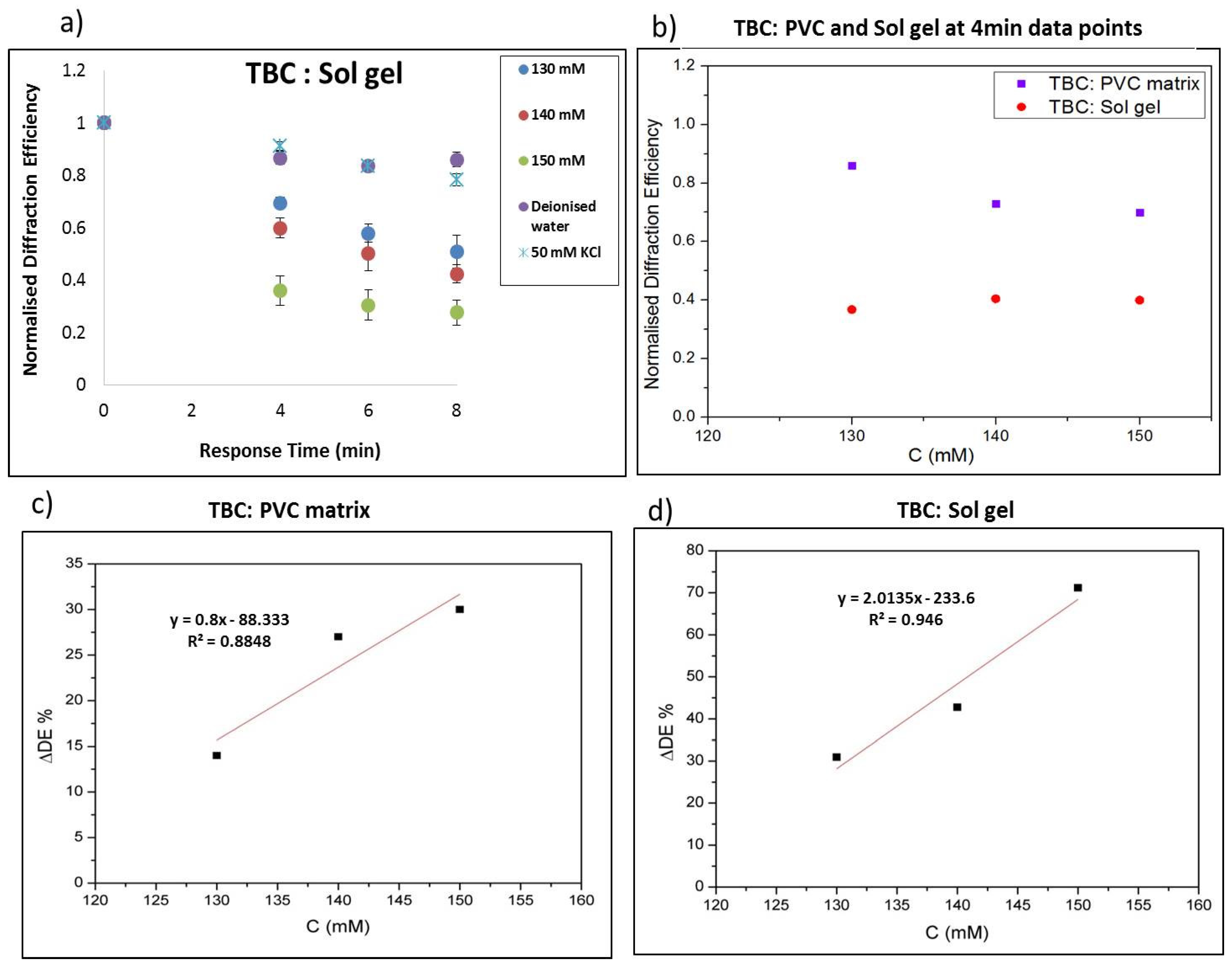
| Components | Chemical Structures | Amount (g) | % w/w in Dry Layer |
|---|---|---|---|
| Acrylamide |  | 1.0 | 24.5 |
| N,N′Methylenbisacrylamide |  | 0.2 | 4.9 |
| Polyvinyl alcohol (10% wt/wt) |  | 1.75 | 43.0 |
| Triethanolamine |  | 1.12 | 27.5 |
| Erthrosine B dye (0.01% wt/wt) |  | 0.0044 | 0.1 |
| Components | Amounts (g) | % w/w in Dry TBC Layer | % w/w in Dry DC Layer |
|---|---|---|---|
| Polyvinyl Chloride (PVC) | 0.3 | 28.6 | 28.6 |
| Dioctyl terephthalate plasticizer (DOTP) | 0.6 | 57.1 | 57.1 |
| Dibenzo-18-crown-6 (DC) | 0.1 | - | 9.5 |
| tetraethyl 4-tert-butylcalix[4]arene Ionophore (TBC) | 0.1 | 9.5 | - |
| Sodium tetraphenylboron | 0.05 | 4.8 | 4.8 |
| Diffraction Efficiency (DE %) | Surface Modulation (nm) |
|---|---|
| Photopolymer 60% ± 5% | <1 |
| After thermal treatment 35% ± 3% | 400 |
| After coating with dibenzo-18-crown-6 (DC) 20% ±3% in PVC matrix | 20 |
| After coating with Tetraethyl p-tert-butylcalix[4]arene Ionophore (TBC) in PVC matrix 20% ± 3% | 10 |
| After coating with dibenzo-18-crown-6 (DC) in sol gel matrix 20% ± 3% | 20 |
| After coating with Tetraethyl p-tert-butylcalix[4]arene Ionophore (TBC) in a sol-gel matrix 20% ± 3% | 18 |
© 2019 by the authors. Licensee MDPI, Basel, Switzerland. This article is an open access article distributed under the terms and conditions of the Creative Commons Attribution (CC BY) license (http://creativecommons.org/licenses/by/4.0/).
Share and Cite
Gul, S.-E.; O’Neill, L.; Cassidy, J.; Naydenova, I. Modified Surface Relief Layer Created by Holographic Lithography: Application to Selective Sodium and Potassium Sensing. Sensors 2019, 19, 1026. https://doi.org/10.3390/s19051026
Gul S-E, O’Neill L, Cassidy J, Naydenova I. Modified Surface Relief Layer Created by Holographic Lithography: Application to Selective Sodium and Potassium Sensing. Sensors. 2019; 19(5):1026. https://doi.org/10.3390/s19051026
Chicago/Turabian StyleGul, Sabad-E, Luke O’Neill, John Cassidy, and Izabela Naydenova. 2019. "Modified Surface Relief Layer Created by Holographic Lithography: Application to Selective Sodium and Potassium Sensing" Sensors 19, no. 5: 1026. https://doi.org/10.3390/s19051026
APA StyleGul, S.-E., O’Neill, L., Cassidy, J., & Naydenova, I. (2019). Modified Surface Relief Layer Created by Holographic Lithography: Application to Selective Sodium and Potassium Sensing. Sensors, 19(5), 1026. https://doi.org/10.3390/s19051026






